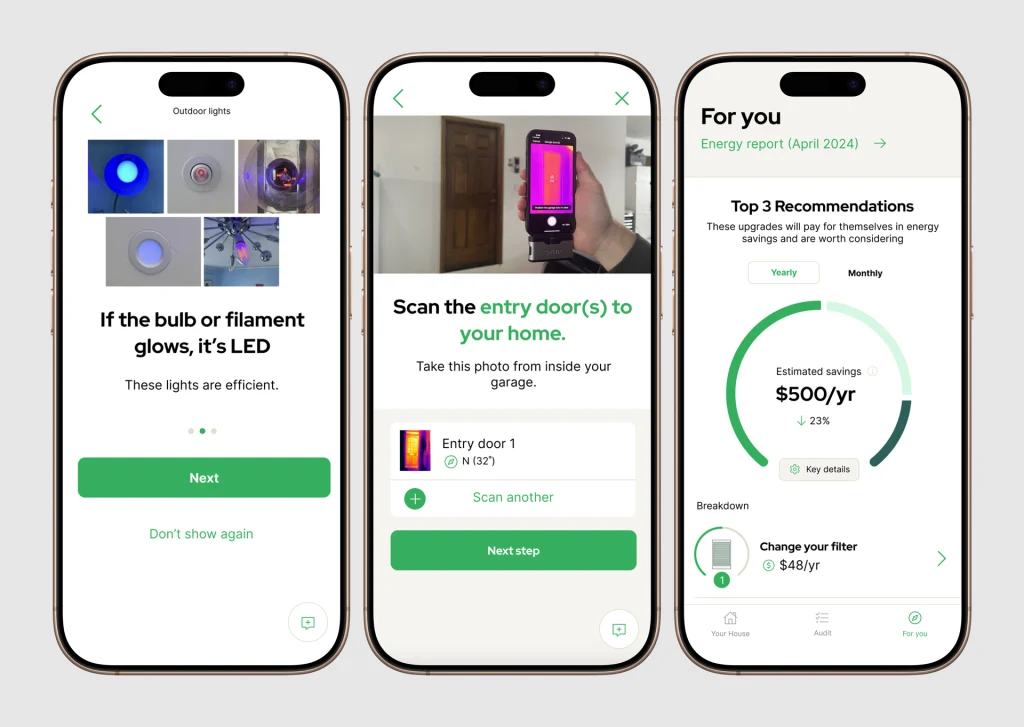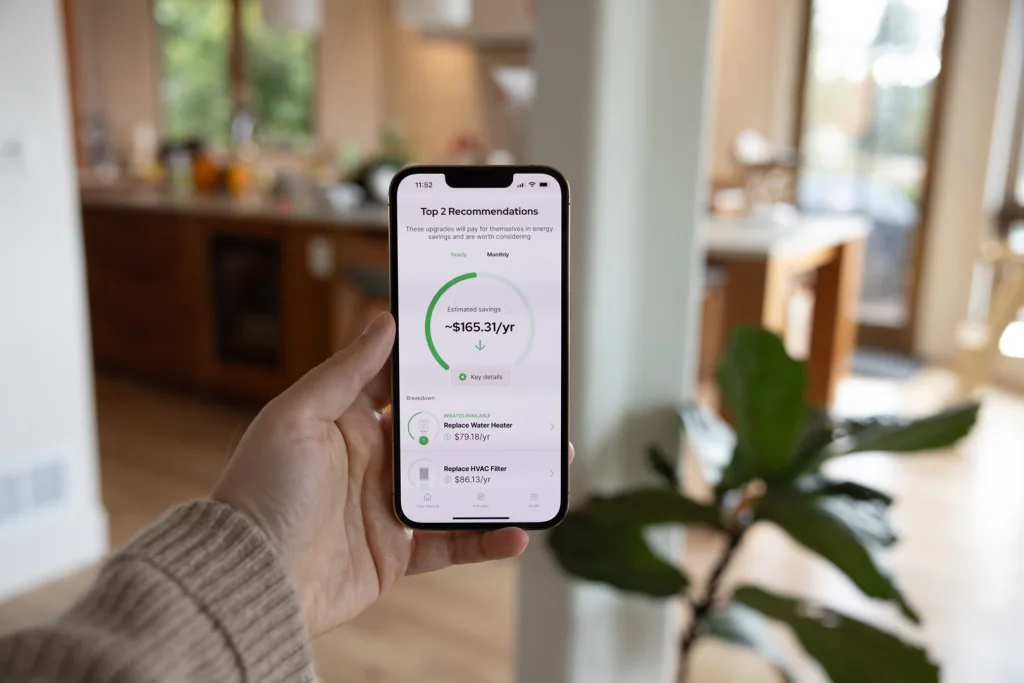Sign up for daily news updates from CleanTechnica on email. Or follow us on Google News!
Our homes can be big time wasters of energy. As utility and heating bills continue to rise, figuring out how to make a home more efficient can pay big dividends. Are drafty windows and doors letting warm or cool air leak out, causing you to raise or lower the thermostat to compensate? Does your attic need more insulation? Are your appliances wasting energy? My wife and I once had a freezer given to us by someone who was moving away. We used it for ten years. When we finally replaced it with a new unit, our electric bill dropped by $40 a month. Over ten years, that “free” freezer cost us $5000. Yikes!
Fast Company did a story about Selina Tobaccowala recently, a tech executive who had worked at Evite and Ticketmaster. Las year she founded HomeBoost after she discovered that the average home energy bill jumped 8% over the past 12 months. “As I started to dig in, I started to see that there was this pretty big gap between where consumers are. Even if they care about the climate, it’s not motivating enough to make change. What’s motivating consumers is the cost of electricity bills,” she told Fast Company.
HomeBoost Energy Audit Tool
Normally, homeowners would hire a professional to do an energy audit to identify their home’s energy deficiencies. The auditor would check the entire structure for leaks, drafts, and sub-par insulation and would typically charge $500 or more for the service. HomeBoost sells a $99 DIY solution called BoostBox that allows consumers to do a whole house energy audit themselves using their smartphone. The kit includes a black light so users can see if their light bulbs are LED or old fashioned incandescent bulbs like the ones Thomas Edison invented 100 years ago.
Consumer research by HomeBoost found that many people viewed home energy auditors like they view car mechanics — professionals trying to upsell them. To counter that impression, the HomeBoost team wanted to create a cheaper, easier way to evaluate a home. The BoostBox’s thermal camera attachment snaps onto a smartphone. Users download an app which guides them through a 30 minute step by step process that takes photos and scans their house. The process includes taking pictures of appliances, water heaters, and thermostats so the app can gauge how much of a difference it would make to swap them out for more environmentally friendly devices.
The app then uses those findings — along with climate and weather data, average cost of contractors, and rebate information — to generate a report outlining potential solutions and their benefits. These recommendations include investments and changes consumers can make to achieve a more efficient home and cut their bills, such as mitigating drafts, sealing windows and doors, and swapping out light bulbs.
Additional Help From HomeBoost
For more complicated fixes like insulating an attic, the BoostBox tool generates a contractor checklist for getting bids and completing a project. Sealing windows and doors can cost just a few hundred dollars; adding blown insulation to an attic can run a few thousand dollars but can significantly cut heating costs, saving hundreds of dollars every year. After consumers are done with their DIY audit, they can mail the BoostBox tools back to HomeBoost or keep them for future use. Some utility companies subsidize audits and there are other services that attempt to use home energy data to make upgrade suggestions, but HomeBoost thinks its hands-on tool will get more interest from consumers who want to identify areas in their homes that could benefit from efficiency investments.
Retrofits represent a significant opportunity to make a dent in the carbon footprint of the built environment and save money. Low-income households spend nearly 18 percent of their income on energy bills. An energy audit can lower those bills significantly. The U.S. Department of Energy estimates that following recommendations from a home energy audit can cut energy bills by nearly a third.
The Advanced Building Collaborative estimates roughly 21 million single-family homes in the US are in need of an energy retrofit. There are also many funding sources to help consumers pay for energy upgrades. The American Council for an Energy Efficient Economy (ACEEE) found $83 billion in potential rebates for these investments, coming from the significant funding from the Inflation Reduction Act as well as various federal and local government programs, tax rebates, and incentives from utilities and financial institutions.
Eventually, HomeBoost wants to create a list of pre-screened contractors, utility contacts, and financing options that will allow users to start the process of making their home more efficient more quickly. In addition, by aggregating details about home energy upgrades and investments in new appliances, the company hopes to provide users with electrification road maps. “There’s so much cool innovation happening,” said Tobaccowala. “But whenever you talk to a consumer, they say they’re overwhelmed and don’t know where to start.”
Rewiring America Can Help
Rewiring America is another great resource to help homeowners identify the rebates and incentives available to them. It is collaborating with several other companies in a collaborative effort to educate consumers about the full range of rebates, tax credits, and low cost financing for electrification and home energy efficiency available under the Inflation Reduction Act. “One of the best ways for people to get that information is through platforms [of companies] that they have relationships with already and engage with on a regular basis,” said Ari Matusiak, CEO of Rewiring America. The member companies can push the pro-electrification message out to their networks.
His company has set a goal for the coalition to reach 10 million of the 121 million US households through the education campaign in “the next couple of years. One of the best ways for people to get that information is through platforms [of companies] that they have relationships with already and engage with on a regular basis.”
In its latest report released last month, Rewiring America said “building electrification will transform our economy — from how we heat our homes, to how we drive, to what is required of our electric grid. This transformation will include an expansion of our workforce of electricians, manufacturing workers, construction workers, and more, each trained in the electrification related skills needed to achieve a fossil fuel free future. Electrification of the nation’s building stock thus represents a once-in-a-generation opportunity: not only to curb planet-heating emissions and protect our shared climate, but for an historic jobs boom that can generate pathways to community wealth and economic development.”
What homeowners and consumers need is the ability to pinpoint what improvements they can make to reduce their energy usage, how much those improvements will cost, who will do them, and what rebates or incentives are available to help pay for them. HomeBoost and Rewiring America are two excellent resources for that information. In addition, those upgrades can create tens of thousands of good paying jobs for Americans. That’s the icing on the cake.

Chip in a few dollars a month to help support independent cleantech coverage that helps to accelerate the cleantech revolution!
Have a tip for CleanTechnica? Want to advertise? Want to suggest a guest for our CleanTech Talk podcast? Contact us here.
Sign up for our daily newsletter for 15 new cleantech stories a day. Or sign up for our weekly one if daily is too frequent.
CleanTechnica uses affiliate links. See our policy here.
CleanTechnica’s Comment Policy






